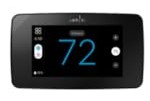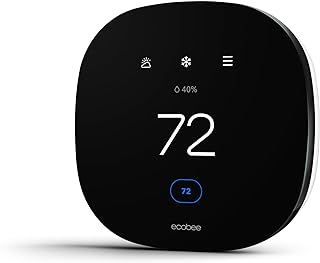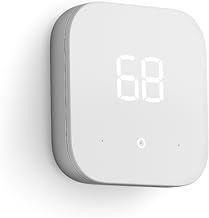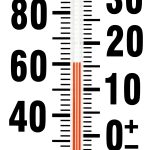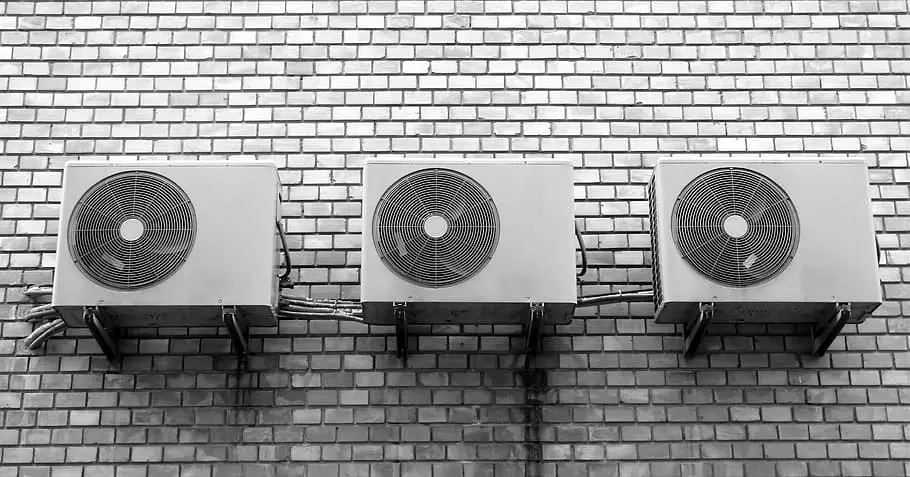Table of Contents
Running the AC Fan Only at Night
Key Takeaways
- Efficiency of Nighttime AC Use: Running the AC fan only at night is an energy-efficient practice that can reduce electricity bills and improve sleep comfort, especially in cooler climates.
- Drawbacks of Fan-Only Mode: This approach may not adequately cool the home during hot nights and lacks dehumidifying capabilities, potentially leading to increased indoor humidity and insufficient air quality control.
- Benefits of Programmable Thermostats: Programmable thermostats provide a solution by allowing automated scheduling for AC use, balancing comfort, energy savings, and addressing humidity and air quality concerns.
- Advantages of Wi-Fi Enabled Thermostats: Wi-Fi enabled programmable thermostats add the convenience of remote control and monitoring, offering flexibility, customizable alerts, and maintenance reminders for a more efficient home climate management.
Introduction
Living in an area where the climate swings from scorching desert heat to refreshing cool breezes can be quite a challenge, especially when it comes to getting a good night’s sleep.
You might find yourself going to bed feeling uncomfortably hot, only to wake up in the middle of the night shivering from an unexpected drop in temperature.
This is where smart usage of your air conditioning (AC) system comes into play, particularly in understanding and utilizing the fan settings effectively.
Your AC thermostat typically offers two fan settings: “On” and “Auto.”
The “On” setting keeps the fan running continuously, providing consistent air circulation but potentially leading to increased energy usage and higher humidity levels.
In contrast, the “Auto” setting is more energy-efficient, where the fan operates only during active cooling cycles.
This mode can help maintain comfortable temperatures without the unnecessary energy expenditure.
In this article, we’ll explore the strategy of running your AC fan only at night, a practice that can be particularly beneficial in regions with such drastic temperature variations.
By effectively cycling off the AC and relying on the fan during cooler nighttime hours, you can enjoy significant energy savings while ensuring your comfort throughout the night.
Running your AC fan only at night, especially in fan mode, can be a beneficial practice for several reasons, particularly if you’re looking to reduce your electricity bills and improve indoor air quality.
Benefits and Drawbacks of Running the AC Fan Only at Night
| Benefits | Drawbacks |
|---|---|
| Reduces electricity costs | Inadequate cooling during hotter nights |
| Improves sleep comfort in cooler climates | Does not address humidity or air quality concerns |
| Prevents mold growth in the AC unit | May lead to increased indoor humidity |
| Provides soothing white noise for better sleep |
- Energy Savings: When you set your AC to fan mode at night, it turns off the compressor, which is responsible for the cooling. The fan alone circulates the air without cooling it, leading to reduced energy consumption. Since the temperature usually drops at night, the need for active cooling decreases, making this an efficient way to maintain comfort without incurring high energy costs.
- Improved Indoor Air Quality: The fan mode helps circulate indoor air. This can be particularly beneficial if you have closed your windows and doors to run the AC during the day, as it prevents the air from becoming too stale.
- Preventing Mold Growth in the AC: Running your AC in fan mode can help evaporate any moisture that’s accumulated in the coils and drain pan, reducing the likelihood of mold and mildew growth inside the unit.
- White Noise for Better Sleep: Some people find that the white noise generated by the AC fan mode can be soothing and help them sleep better.
However, there are a few considerations to keep in mind:
- No Cooling Effect: The fan mode does not cool the air since the compressor is off. If the night is particularly warm, you might not find relief from the heat.
- No Dehumidifying Effect: The fan mode does not dehumidify the air. In fact, it might slightly increase indoor humidity levels.
- Increased Maintenance: Running the fan constantly can lead to quicker clogging of filters and may require more frequent maintenance.
How to Manually Set a Thermostat to Run the Fan Only
To set up your AC fan for night use, simply switch your AC to the fan mode using your remote or thermostat. This setting typically shows a fan icon. It’s also advisable to set your AC to “Auto” mode during the day, which runs the fan only when cooling is needed, and then switch to fan mode at night.

Manually adjusting the thermostat every night and morning can be cumbersome. This is where a programmable thermostat can be extremely beneficial.
Programmable Thermostats
A programmable thermostat automates the control of your HVAC system, making it easier to manage your AC’s fan mode and other settings based on your schedule. Here’s how it could help you achieve your goal of running the AC fan at night without manual intervention:
- Automated Schedule Setting: You can program the thermostat to automatically switch your AC to fan mode at a specific time each night and then revert to regular cooling mode or turn off in the morning. This eliminates the need to remember to adjust the settings manually.
- Customizable for Daily Routines: Different schedules can be programmed for weekdays and weekends, accommodating your routine. For instance, you might prefer a different schedule on nights when you go to bed later.
- Energy Efficiency: By ensuring that the AC runs only when needed, programmable thermostats can help save energy and reduce costs, aligning with your goal of energy savings.
- Convenience and Comfort: With a programmable thermostat, your home environment can be automatically adjusted to your preferences, providing comfort without the hassle of manual adjustments.
- Advanced Features: Many modern programmable thermostats offer additional features like remote control via apps, learning your preferences over time, or even integrating with other smart home systems for a more connected home experience.
Benefits and Drawbacks of Using a Programmable Thermostat
| Benefits | Drawbacks |
|---|---|
| Automates HVAC system control for efficiency | Initial setup and programming might be complex for some users |
| Schedules to optimize comfort and energy savings | May require compatibility checks with existing HVAC systems |
| Remote access/control via Wi-Fi enhances flexibility | Higher upfront cost compared to non-programmable thermostats |
| Customizable alerts and maintenance reminders | Dependence on Wi-Fi for advanced features, issues if internet is down |
| Addresses specific concerns like humidity and air quality | May not provide benefits if not programmed correctly |
| Adaptable to different lifestyles, including vacation modes | Potential for technical issues or software glitches |
Choosing the Right Thermostat
When selecting a programmable thermostat, consider the following:
- Compatibility: Ensure the thermostat is compatible with your HVAC system.
- Features: Look for features like Wi-Fi connectivity for remote control, learning capabilities, and compatibility with smart home devices.
- User Interface: Choose a thermostat with an intuitive interface, making it easy to program and adjust schedules.
Getting Started with a Programmable Thermostat:
- Select a Model: Choose a thermostat that fits your system and needs.
- Installation: Follow the manufacturer’s instructions for installation, or consider professional installation if you’re not comfortable doing it yourself.
- Programming: Set up your preferred schedule according to the instructions. You might set it to switch to fan mode at your bedtime and revert to the previous setting in the morning.
- Adjust as Needed: Over time, you can adjust the programming to better fit your schedule and comfort preferences.
 Modern Smart Thermostats
Modern Smart Thermostats
Often come with mobile control capabilities that provide several benefits:
- Remote Access: You can control your thermostat from anywhere using your smartphone, computer, tablet, or iPad. This means you can adjust your home’s temperature settings whether you’re at home, at work, or even on vacation.
- Ease of Use: Mobile apps provided by thermostat manufacturers, like Honeywell and Lennox, are user-friendly and intuitive. They make setting up and adjusting your thermostat’s schedule straightforward.
- Customizable Alerts and Reminders: These apps can send you alerts for unusually high or low temperatures and remind you when it’s time for routine maintenance tasks like air filter replacements.
- Vacation Settings: If you’re going away, you can easily set a vacation mode to save energy while ensuring your home stays at a safe temperature.
- Weather Alerts: Some apps also provide weather alerts specific to your area, helping you make more informed decisions about your HVAC settings.
- Programming Tips: To maximize the benefits, it’s recommended to avoid frequent adjustments and drastic temperature changes. For instance, setting a consistent program for weekdays and a different one for weekends can help maintain comfort and efficiency.
With a Wi-Fi-enabled programmable thermostat, you can also enjoy the advantage of controlling your home’s temperature on the go, ensuring you don’t waste energy if your schedule changes unexpectedly.
Examples of Scheduling a Programmable Thermostat
Scenario 1: Energy Savings with Comfort
- Daytime (When Home): Set the thermostat to a comfortable but energy-efficient temperature, such as 78°F (25°C) during the summer. This setting is warm enough to save energy but cool enough for comfort.
- Nighttime (Sleeping Hours): Program the thermostat to switch to fan mode around your bedtime. This will circulate the air without the extra cooling, saving energy. If humidity is a concern, set the AC to turn on for cooling if the indoor humidity rises above a certain level.
- Morning: Schedule the AC to start cooling 30 minutes before you wake up, ensuring comfort when you start your day. Set it back to energy-saving mode when you leave for work.
Scenario 2: Maximizing Air Quality
- Daytime (When Home): Keep the AC on a comfortable setting while ensuring it cycles on occasionally to filter the indoor air.
- Evening to Early Night: Use the AC in cooling mode to reduce humidity and maintain air quality.
- Late Night to Morning: Switch to fan mode to save energy. If equipped with humidity sensors, program the AC to activate if humidity levels rise too high.
- Morning: Before waking up, revert to the cooling mode to reduce any overnight humidity increase and ensure a comfortable start to your day.
Best Programmable Thermostats
 Google Nest Learning Thermostat
Google Nest Learning Thermostat
- Rating: Best Overall
- Features: Learns and adapts to your habits, voice control with Google Home, energy-efficient.
- Design: Sleek and modern with various finishes.
- Purchase Here

Emerson Sensi Wi-Fi Smart Thermostat- Rating: Best for Budget-Conscious Consumers
- Features: Affordable, energy-saving, smart alerts, no common wire required for installation.
- App Control: Easy adjustments through its app.
- View Here
 ecobee SmartThermostat
ecobee SmartThermostat
- Rating: Best for Smart Home Integration
- Features: Room sensors for even temperature, built-in Amazon Alexa, compatible with various smart home systems, music streaming capability.
- Voice Control: Offers extensive smart features through voice commands.
- Purchase Here

Amazon Smart Thermostat- Rating: Best Value Smart Thermostat
- Features: Affordable smart thermostat, DIY installation, energy consumption tracking.
- Integration: Works seamlessly with Amazon’s Alexa app.
- Purchase Here
Please note that while programmable thermostats, including top models like the Google Nest Learning Thermostat, offer advanced features and efficiencies, common issues such as improper wiring, low battery, and connectivity problems can occur. These issues are often due to installation errors or routine maintenance needs rather than the units themselves. Proper installation and regular maintenance are key to ensuring the optimal performance of any programmable thermostat.
Summary
Running the AC only at night, particularly in fan mode, offers energy savings and better sleep comfort, especially in cooler climates. However, it may not be effective in reducing humidity or providing adequate cooling during hotter nights.
Programmable thermostats present a solution by automating HVAC control, offering remote access and customized settings for different lifestyles. These devices help in balancing comfort and energy efficiency, although they require proper installation and maintenance to avoid common issues like faulty wiring or battery problems.
FAQ:
-
Is it more energy-efficient to run the AC only at night?
Yes, it can be more energy-efficient, especially in climates where nights are cooler. This approach reduces the need for continuous cooling, thus saving energy.
-
Will running the AC fan at night help with humidity control?
Running the fan alone does not dehumidify the air. In fact, it may slightly increase indoor humidity since it circulates air without removing moisture.
-
Can running my AC at night improve indoor air quality?
Running the AC at night can improve air circulation, which may help indoor air quality. However, without the cooling and dehumidifying functions, it may not significantly improve air quality.
-
What are the advantages of using a programmable thermostat over a standard one?
Programmable thermostats offer the ability to set and automate heating and cooling schedules, improving energy efficiency and comfort.
-
How can a programmable thermostat help with energy savings?
It allows you to set specific times for heating and cooling, reducing unnecessary energy usage when you’re asleep or away.
-
Are programmable thermostats difficult to install and set up?
It varies by model, but many are user-friendly. Some may require professional installation, especially if they need a C-wire or are part of a complex HVAC system.
-
Can I control a programmable thermostat with my smartphone?
Many modern programmable thermostats offer Wi-Fi connectivity, allowing control through a smartphone app.
-
Do programmable thermostats work with all types of HVAC systems?
Most programmable thermostats are compatible with a variety of systems, but it’s important to check compatibility, especially for systems like high-voltage or multi-stage units.
-
How often should I adjust the settings on my programmable thermostat?
Ideally, adjustments should align with seasonal changes or significant changes in your routine. Frequent changes can reduce efficiency.
-
What should I do if my programmable thermostat isn’t saving me money on energy bills?
Review your programming settings to ensure they align with your actual schedule and check for any HVAC system issues that may be impacting efficiency.
-
Is it worth upgrading to a Wi-Fi-enabled programmable thermostat?
If you value remote access, enhanced features, and the ability to integrate with smart home systems, upgrading can be beneficial.
-
Can I use a programmable thermostat to control different zones in my home?
Yes, but this requires a thermostat designed for zoning or multiple thermostats for different areas.
-
What are some common issues with programmable thermostats and how can I troubleshoot them?
Common issues include incorrect programming, connectivity problems with Wi-Fi models, and compatibility issues with HVAC systems. Troubleshooting typically involves checking settings, restarting the device, or consulting the manual.
-
How does a programmable thermostat know when to change the temperature?
It follows the programmed schedule set by the user. Some advanced models can also learn your habits over time or use sensors to determine occupancy.
-
Are there any security concerns with Wi-Fi-enabled thermostats?
As with any connected device, there is a risk of unauthorized access. It’s important to use strong, unique passwords and keep the device’s firmware updated.


 Modern Smart Thermostats
Modern Smart Thermostats
